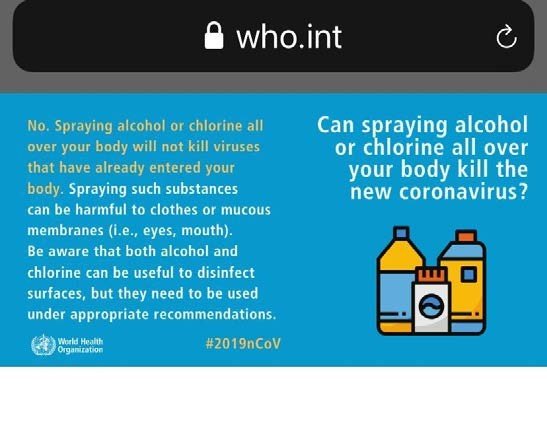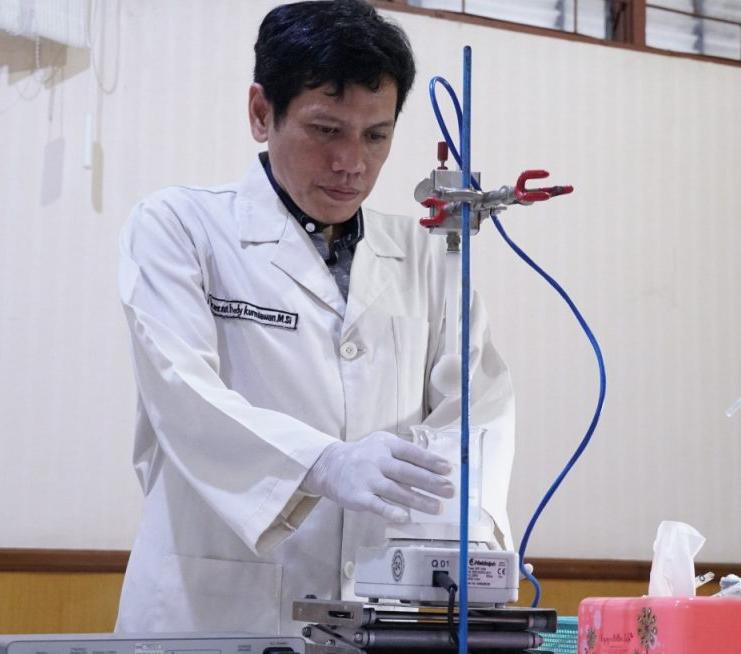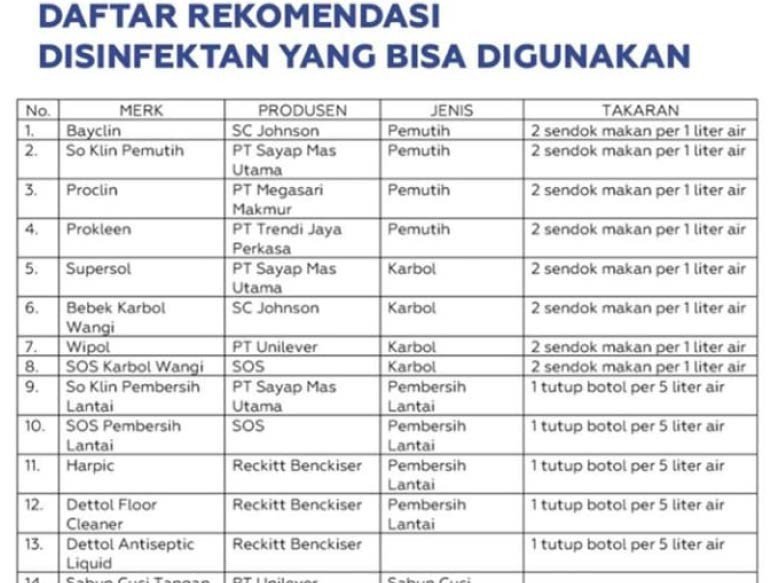Safety Condition Of Sterilization Chamber According To ITS Lecturer

Terms of safety Sterilizers World Health Organization (WHO) warning about the dangers of alcohol and chlorine in the face according to ITS lecturers
ITS Campus, ITS News – it was the Covid-19 pandemic nowadays, making people informed of the information in cyberspace with various terms ranging from disinfectant, antiseptic, to the sterilization chamber. Recently, the World Health Organization (WHO) has been giving warnings related to the dangers of alcohol and chlorine in the body.
Looking at that, here is a complete explanation of Prof. Dr. RER Nat Fredy Kurniawan MSi, the professor of Institut Teknologi Sepuluh Nopember (ITS), to prevent public panicking.
Fredy reveals this new virus (Covid-19) has seized a lot of attention from all circles, ranging from doctors, experts, to the public. Currently, the disinfectant and antiseptic are assessed as a preventive step to prevent the transmission of Coronavirus, many of which are hunting and even self-formulated by the community. “What is even more interesting is the emergence of is chamber phenomenon or chambers, I think it is triggered by the success of Vietnam that popularized through cyberspace,” said Fredy.
After going through the news, Fredy continued, all areas including in Indonesia made a room for sterilization. “Problems began to arise when there is a jolt of the WHO related dangers of alcohol and chlorine use in the body,” said lecturer of the Department of Chemistry ITS.

Prof Dr rer nat Fredy Kurniawan MSi
According to him, the information reminds us that the chemicals need to be handled properly. In this case, knowledge about chemistry is indispensable, considering many people who make their disinfectant and antiseptic.
“If it is done by people who do not have sufficient competence and capability in the right and use it properly, it will be very dangerous for oneself, others, and also the environment in the near term and can be the long term,” said Fredy concerned.
Lecturers who are an expert in the field of chemo and biosensors explained more in what is antiseptic and disinfectant first. Based on WHO terminology, antiseptics are one type of disinfectant that destroys or inhibits microorganisms in living tissue without causing injury. “Included in this classification are polyvidone iodine, chlorhexidine, and alcohol,” explains Fredy.
Whereas, disinfectant function destroys and inhibits pathogenic microorganisms in nonspores or vegetative state
Bahan-bahan berbasis kedua material yang disebut, yaitu chlorine dan etanol banyak tersedia di pasaran. WHO has also prescribed a recommendation to make a hand sanitizer based on ethanol and Iso Propyl Alcohol (IPA). “The problem is, does the community have the ability to properly fit? Even among those who do not understand how to check the alcohol content and materials are used well, “reminds Fredy.

The hand sanitizer making recommendations with materials that are easily found in the community
With this WHO formula, according to Fredy, makes the public suddenly understand the chemistry. Make your hand sanitizer will be a choice of people because the price in the market is very expensive. Some make for personal needs or even as well as looking at business opportunities.
“The raw material of ethanol and IPA became scarce and the price increased dramatically, from Rp 30,000 per liter to Rp 180,000 per liter, as result, the community panicked because it considers hand sanitizer as the rescue,” said the head of Department of Chemistry ITS.
From the problem that continues to arise, there are “emergency aid” that intends to help from someone at a particular institution. Which provides a simple way to make a hand sanitizer from the disinfectant materials that are easily found in the market. “The compounds in the recommendation are actually not for the antiseptic, moreover there is an idea of the compound used in the sterilization chamber,” he explained again.
WHO has not recommend liquids such as ethanol, chlorine, and H2O2 in the sterilization chamber. Fredy explained that the ingredients are carcinogenic, even resulting in bacterial mutation, viewable Material Safety Data Sheet (MSDS). This opinion considers the negative impact on the next one to two years.
Fredy further explained that the sterilization chamber is divided into two parts, the chamber itself and the disinfectant material used. “The purpose of this room is to kill microorganisms attached to the body or in someone’s clothing in real time,” he explained.
Disinfectant will only affect the room, although the residue can come out in large quantities. However, the main danger of this chamber is the chemicals that is used.
Of all the chemicals commonly available as disinfectants based on the Centers of Disease Control and Prevention (CDCP) and WHO, almost all of these compounds have significant effect when used to humans directly. “However, there are two safe compounds to use, namely ozone and chlorine dioxide, but still with a predetermined size and proper use,” said Fredy.
The latest writing related to ozone therapy has been reported by Rowen and Robins. Ozone is effectively used to kill the SARS Cov-2 which is the cause of the Covid-19, safely, effectively, and at a low cost. “The acceptable human limit exposed by ozone is 0.06 ppm for 8 hours per day for five days a week or 0.3 PPM maximum for 15 minutes,” said Fredy.
As for chlorine dioxide, said Fredy, based on WHO data and other research have the potential to be used in chamber sterilization. “Research suggests that when inhalation of the short-term chlorine dioxide is safe enough for human health, with a concentration limit of up to 0.3 ppm for 15 minutes will not cause death or signs of health disorders,” he explained.
As previously explained, the Sterilization chamber using ozone and Chlorine Dioxide has the potential to be used to solve the Covid-19 case safely. However, the condition of the sterilization chamber must be made and controlled by qualified experts. “The quality control of the room in question is related to dosage and how to use the correct, other disinfectant materials other than ozone and Chlorine Dioxide are not recommended because it can lead to fatal side effects in the short and long term,” he said.
Fredy said, with the current pandemic conditions, of course, all the ways necessary to be deployed in the overcome. “I hope it can remind the public that it can solve the problem, but do not cause new problems to keep people healthy,” he concluded. (meg/rev/ITS Public Relations)
Related News
-
Carrying New Innovation, ITS Robotic Team Ready to Carve Out International Achievements
ITS Campus, ITS News —Back with their newest innovations, the Banyubramanta and Bayucaraka robot teams from Institut Teknologi Sepuluh
March 29, 2020 11:03 -
ITS New Doctor Innovates Self-Supervised Learning for 3D Data
ITS Campus, ITS News — A graduate of the Electrical Engineering Department of Institut Teknologi Sepuluh Nopember (ITS), Dr
March 29, 2020 11:03 -
ITS Professor Successfully Blends Biomass and Plastic into Biofuel
ITS Campus, ITS News — The increasing amount of plastic used in society creates its own environmental problems. To
March 29, 2020 11:03 -
English Check, English Learning Platform Innovated by ITS Students
ITS Campus, ITS News —The students of Institut Teknologi Sepuluh Nopember (ITS) continue to present innovations in the field
March 29, 2020 11:03
